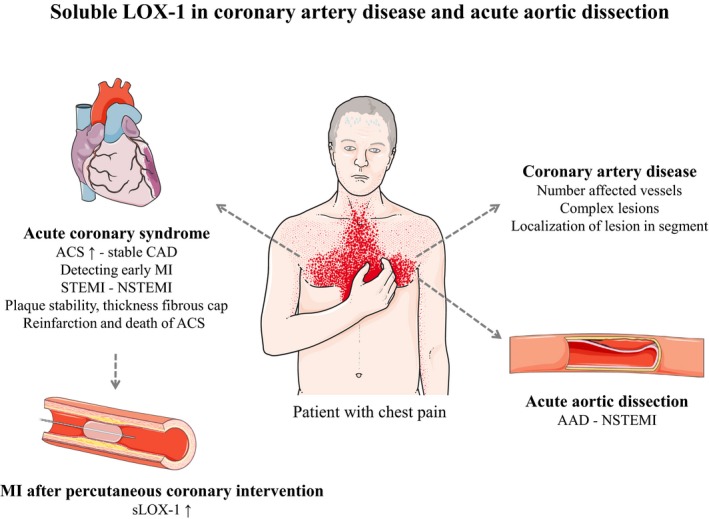Figure 2.

LOX‐1 (soluble lectin‐like oxidized LDL [low‐density lipoprotein] receptor 1; sLOX‐1) in coronary artery disease (CAD) and acute aortic dissection (AAD). sLOX‐1 was demonstrated to be elevated in acute coronary syndrome (ACS), especially in the early phase before elevations of cardiac troponin (TnT). Patients with ST‐segment–elevation myocardial infarction (STEMI) had higher sLOX‐1 than those with non‐STEMI (NSTEMI). sLOX‐1 was an indicator for plaque stability and thickness of the fibrous cap of coronary artery plaques. Concentrations of sLOX‐1 could predict reinfarction or death due to ACS. Patients with myocardial infarction (MI) after undergoing percutaneous coronary intervention (PCI) had higher sLOX‐1. In stable CAD, sLOX‐1 reflected the number of affected vessels and was an indicator for the complicity of lesions. sLOX‐1 was higher in patients with AAD compared with controls and with NSTEMI. sLOX‐1 had comparable specificity and sensitivity to TnT in discriminating between AAD and NSTEMI. Figure adapted from SMART—Servier Medical Art by Servier (https://smart.servier.com).
